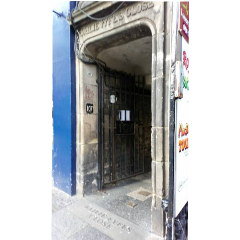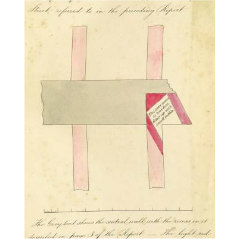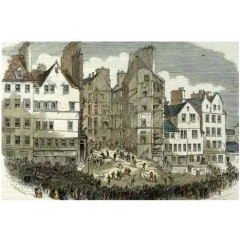
103 High Street today
Bailie Fyfe’s Close, Edinburgh, EH1 1SS
On the 24th November 1861, a seven-story house here in the High Street suddenly collapsed in the middle of the night, burying nearly all of the inhabitants and killing 35 of them. The house was several centuries old, with decaying timbers, and was thought to house up to 100 people. The whole house gave way at once, leaving only the gables still standing. Many years before this catastrophe occurred, in 1848, Dr. Alexander Wood, a leading physician in the city, reported the inadequacy of the city’s provisions for poor relief to the Royal College of Physicians. No action was taken, however, until this tragic occurrence, which was widely reported across the whole of the United Kingdom. Following the disaster, the town council appointed Dr. Henry Littlejohn as the city’s first Medical Officer of Health to write a report on the sanitary conditions of the city. Dr. Littlejohn’s conclusions, along with continuing efforts by Dr. Alexander Wood, eventually resulted in some improvements and in the foundation of The Edinburgh Association for Improving the Conditions of the Poor in 1868.

Image taken from page 61 of ‘Precognition of Witnesses examined at the instance of the Procurator-Fiscal for the City of Edinburgh, regarding the falling of the tenement Nos. 99 to 103 High Street, on Nov. 24, 1861’

Image taken from page 71 of ‘Precognition of Witnesses examined at the instance of the Procurator-Fiscal for the City of Edinburgh, regarding the falling of the tenement Nos. 99 to 103 High Street, on Nov. 24, 1861’

Contemporary illustration showing rescue workers removing ‘the dead and wounded from the fallen house’ on 24 November 1861
More information: https://www.edinburghnews.scotsman.com/news/entertainment/on-this-day-in-1861-edinburgh-tenement-collapse-kills-35-1-4300451
Photo credits: Lucy Ridley, British Library Catalogue, Edinburgh Evening News







